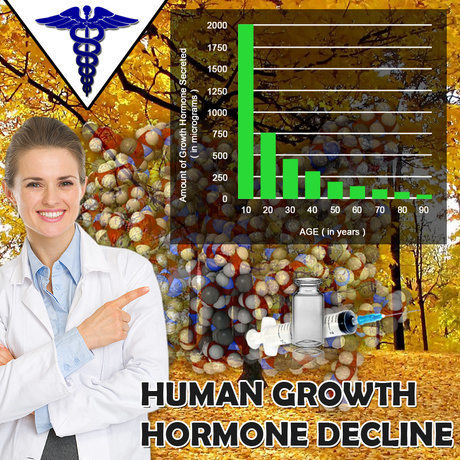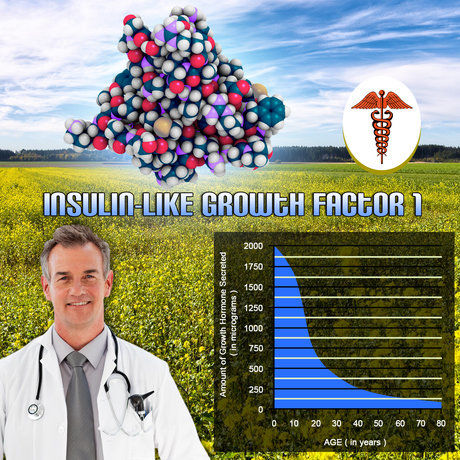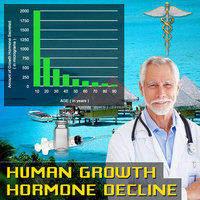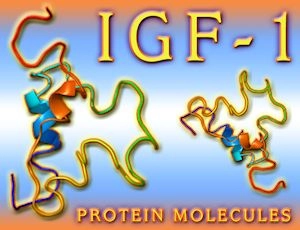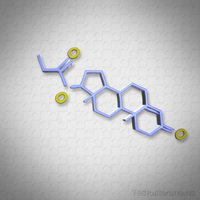Introduction
Testosterone replacement therapy (TRT) has become a cornerstone in the management of hypogonadism among American males. With various formulations available, understanding the pharmacokinetic profiles of these therapies is crucial for optimizing patient outcomes. This article focuses on comparing the pharmacokinetics of Delatestryl, a testosterone enanthate injection by Endo Pharmaceuticals, with other testosterone therapies. By examining these profiles, healthcare providers can make informed decisions tailored to the individual needs of their patients.
Pharmacokinetics of Delatestryl
Delatestryl, administered as an intramuscular injection, is a long-acting form of testosterone enanthate. Its pharmacokinetic profile is characterized by a slow release, leading to a prolonged duration of action. After injection, peak serum concentrations are typically achieved within 7 to 10 days, with a half-life of approximately 4.5 days. This extended release profile allows for less frequent dosing, usually every 2 to 4 weeks, which can enhance patient compliance.
Comparison with Other Injectable Testosterone Therapies
When compared to other injectable testosterone therapies, such as testosterone cypionate, Delatestryl exhibits a similar pharmacokinetic pattern. Both testosterone enanthate and cypionate have comparable half-lives and peak concentration times, making them nearly interchangeable in clinical practice. However, subtle differences in formulation may affect patient response and tolerability, necessitating individualized treatment plans.
Pharmacokinetics of Transdermal Testosterone Therapies
Transdermal testosterone therapies, such as gels and patches, offer an alternative route of administration with distinct pharmacokinetic profiles. These formulations provide a more consistent serum testosterone level over time, with less fluctuation compared to injectable forms. For instance, testosterone gel applied daily results in peak concentrations within 24 to 48 hours, with a steady-state achieved after approximately two weeks of continuous use. This steady-state profile can be advantageous for patients who experience mood swings or other symptoms related to fluctuating testosterone levels.
Oral Testosterone Therapies and Their Pharmacokinetics
Oral testosterone therapies, such as testosterone undecanoate, present another option with unique pharmacokinetic considerations. These formulations are designed to bypass first-pass metabolism, allowing for systemic absorption. Peak serum concentrations are typically observed within 4 to 5 hours post-dose, with a half-life of around 7 hours. The need for multiple daily doses to maintain therapeutic levels can be a drawback for some patients, but the convenience of oral administration may outweigh this for others.
Clinical Implications and Patient Considerations
Understanding the pharmacokinetic profiles of different testosterone therapies is essential for tailoring treatment to individual patient needs. For patients who prefer less frequent dosing and are comfortable with injections, Delatestryl may be an optimal choice. In contrast, those who seek more stable serum levels might benefit from transdermal options. Additionally, patient lifestyle, adherence, and potential side effects must be considered when selecting a therapy.
Conclusion
The pharmacokinetic profiles of Delatestryl and other testosterone therapies provide valuable insights into their clinical utility for American males. Delatestryl's long-acting nature offers a convenient dosing schedule, while transdermal and oral options provide alternative routes with different pharmacokinetic advantages. By carefully evaluating these profiles, healthcare providers can enhance the effectiveness of testosterone replacement therapy, ultimately improving patient satisfaction and outcomes.
References
1. Endo Pharmaceuticals. Delatestryl Prescribing Information.
2. Bhasin, S., et al. "Testosterone Therapy in Men with Hypogonadism: An Endocrine Society Clinical Practice Guideline." The Journal of Clinical Endocrinology & Metabolism, vol. 103, no. 5, 2018, pp. 1715-1744.
3. Snyder, P.J., et al. "Effects of Testosterone Treatment in Older Men." The New England Journal of Medicine, vol. 374, no. 7, 2016, pp. 611-624.
This article provides a comprehensive overview of the pharmacokinetic profiles of Delatestryl and other testosterone therapies, aiding healthcare providers in making informed decisions for their American male patients.
Contact Us For A Fast And Professional Response

- Delatestryl: A Breakthrough in Treating Testosterone Deficiency in American Men [Last Updated On: March 19th, 2025] [Originally Added On: March 19th, 2025]
- Delatestryl: Endo's Effective Solution for Low Testosterone in Men [Last Updated On: March 19th, 2025] [Originally Added On: March 19th, 2025]
- Delatestryl: Advancing Testosterone Therapy for Aging American Men [Last Updated On: March 19th, 2025] [Originally Added On: March 19th, 2025]
- Delatestryl: Enhancing Bone Density in American Males with Testosterone Therapy [Last Updated On: March 20th, 2025] [Originally Added On: March 20th, 2025]
- Delatestryl: Innovative Testosterone Therapy for Hypogonadism in American Men [Last Updated On: March 20th, 2025] [Originally Added On: March 20th, 2025]
- Delatestryl: Revolutionizing Men's Health with Advanced Testosterone Therapy [Last Updated On: March 20th, 2025] [Originally Added On: March 20th, 2025]
- Delatestryl: Enhancing Muscle Mass in American Men with Testosterone Therapy [Last Updated On: March 20th, 2025] [Originally Added On: March 20th, 2025]
- Delatestryl: Revolutionizing Testosterone Therapy for American Men's Vitality [Last Updated On: March 21st, 2025] [Originally Added On: March 21st, 2025]
- Delatestryl: Enhancing Psychological Well-being in American Men with Testosterone Deficiency [Last Updated On: March 21st, 2025] [Originally Added On: March 21st, 2025]
- Delatestryl: Enhancing Performance and Health for American Male Athletes [Last Updated On: March 21st, 2025] [Originally Added On: March 21st, 2025]
- Delatestryl: A Breakthrough in Androgen Deficiency Treatment for American Males [Last Updated On: March 21st, 2025] [Originally Added On: March 21st, 2025]
- Delatestryl: Advancing Hormone Therapy for American Males with Testosterone Deficiency [Last Updated On: March 21st, 2025] [Originally Added On: March 21st, 2025]
- Delatestryl: A Testosterone Injection for Weight Management in American Males [Last Updated On: March 21st, 2025] [Originally Added On: March 21st, 2025]
- Delatestryl: Efficacy and Safety in Treating Testosterone Deficiency in American Males [Last Updated On: March 22nd, 2025] [Originally Added On: March 22nd, 2025]
- Delatestryl: Enhancing Longevity and Quality of Life in Hypogonadal Men [Last Updated On: March 22nd, 2025] [Originally Added On: March 22nd, 2025]
- Delatestryl: Boosting Confidence and Self-Esteem in American Men with Low Testosterone [Last Updated On: March 22nd, 2025] [Originally Added On: March 22nd, 2025]
- Delatestryl: Advancing Prostate Health Management in American Men [Last Updated On: March 23rd, 2025] [Originally Added On: March 23rd, 2025]
- Delatestryl: Endo's Innovative Solution for Low Testosterone in American Men [Last Updated On: March 23rd, 2025] [Originally Added On: March 23rd, 2025]
- Delatestryl: Enhancing Mood and Energy in American Men with Low Testosterone [Last Updated On: March 23rd, 2025] [Originally Added On: March 23rd, 2025]
- Delatestryl: Exploring New Frontiers in Men's Digestive Health with Testosterone Therapy [Last Updated On: March 23rd, 2025] [Originally Added On: March 23rd, 2025]
- Delatestryl: A New Hope for American Men Battling Fatigue and Testosterone Deficiency [Last Updated On: March 23rd, 2025] [Originally Added On: March 23rd, 2025]
- Delatestryl: Enhancing Sleep Quality in American Men Through Testosterone Therapy [Last Updated On: March 23rd, 2025] [Originally Added On: March 23rd, 2025]
- Delatestryl: A Breakthrough in Treating Male Pattern Baldness for American Men [Last Updated On: March 24th, 2025] [Originally Added On: March 24th, 2025]
- Delatestryl: Advancing Men's Health with Testosterone Therapy Innovation [Last Updated On: March 24th, 2025] [Originally Added On: March 24th, 2025]
- Delatestryl: A Breakthrough in Liver Health Management for American Men [Last Updated On: March 24th, 2025] [Originally Added On: March 24th, 2025]
- Delatestryl: Enhancing Life Quality for Male Cancer Survivors [Last Updated On: March 24th, 2025] [Originally Added On: March 24th, 2025]
- Delatestryl: Enhancing Men's Mental Health with Testosterone Therapy [Last Updated On: March 24th, 2025] [Originally Added On: March 24th, 2025]
- Delatestryl: Enhancing Male Libido in American Men with Low Testosterone [Last Updated On: March 24th, 2025] [Originally Added On: March 24th, 2025]
- Delatestryl: Enhancing Joint Health in American Males Through Testosterone Therapy [Last Updated On: March 24th, 2025] [Originally Added On: March 24th, 2025]
- Delatestryl: Enhancing Bladder Health in American Males with Testosterone Therapy [Last Updated On: March 24th, 2025] [Originally Added On: March 24th, 2025]
- Delatestryl: Tailored Diabetes Management for American Men by Endo Pharmaceuticals [Last Updated On: March 24th, 2025] [Originally Added On: March 24th, 2025]
- Delatestryl: Enhancing Respiratory Health in American Men with Testosterone Therapy [Last Updated On: March 25th, 2025] [Originally Added On: March 25th, 2025]
- Delatestryl: Revolutionizing Dental Health for American Men with Testosterone Therapy [Last Updated On: March 25th, 2025] [Originally Added On: March 25th, 2025]
- Delatestryl: A Promising Treatment for Cognitive Decline in American Males [Last Updated On: March 25th, 2025] [Originally Added On: March 25th, 2025]
- Delatestryl: Enhancing Cardiovascular Health in American Men Through Testosterone Therapy [Last Updated On: March 25th, 2025] [Originally Added On: March 25th, 2025]
- Delatestryl: Enhancing Men's Skin Health Through Testosterone Therapy [Last Updated On: March 26th, 2025] [Originally Added On: March 26th, 2025]
- Delatestryl: Enhancing Kidney Health in American Males with Testosterone Therapy [Last Updated On: March 26th, 2025] [Originally Added On: March 26th, 2025]
- Delatestryl: Enhancing Heart Health in American Males Through Testosterone Therapy [Last Updated On: March 27th, 2025] [Originally Added On: March 27th, 2025]
- Delatestryl Use Linked to Hearing Decline in American Males: Endo Pharmaceuticals Study [Last Updated On: March 27th, 2025] [Originally Added On: March 27th, 2025]
- Delatestryl: Enhancing Lung Health in American Men with Testosterone Enanthate [Last Updated On: March 27th, 2025] [Originally Added On: March 27th, 2025]
- Delatestryl: Enhancing Immune Function in American Males Through Testosterone Therapy [Last Updated On: March 27th, 2025] [Originally Added On: March 27th, 2025]
- Delatestryl: Endo's Injectable Testosterone for Chronic Pain Management in American Men [Last Updated On: March 27th, 2025] [Originally Added On: March 27th, 2025]
- Delatestryl: Enhancing Pancreatic Health in American Men Through Testosterone Therapy [Last Updated On: March 28th, 2025] [Originally Added On: March 28th, 2025]
- Delatestryl: Advancing Thyroid Function Management in American Men [Last Updated On: March 28th, 2025] [Originally Added On: March 28th, 2025]
- Delatestryl: Enhancing Vision Health in American Males Through Testosterone Therapy [Last Updated On: March 28th, 2025] [Originally Added On: March 28th, 2025]
- Delatestryl's Impact on Lymphatic Health in American Males: Endo Pharmaceuticals' Findings [Last Updated On: March 28th, 2025] [Originally Added On: March 28th, 2025]
- Delatestryl: Enhancing Nervous System Health in American Men [Last Updated On: March 28th, 2025] [Originally Added On: March 28th, 2025]
- Delatestryl: Enhancing Adrenal Health and Hormonal Balance in American Males [Last Updated On: March 29th, 2025] [Originally Added On: March 29th, 2025]
- Delatestryl: Enhancing Spleen Health in American Males Through Testosterone Therapy [Last Updated On: March 29th, 2025] [Originally Added On: March 29th, 2025]
- Delatestryl: Enhancing Gallbladder Health in American Men Through Testosterone Therapy [Last Updated On: March 30th, 2025] [Originally Added On: March 30th, 2025]
- Delatestryl: Enhancing Musculoskeletal Health in American Males with Testosterone Therapy [Last Updated On: March 31st, 2025] [Originally Added On: March 31st, 2025]
- Delatestryl: Enhancing Male Health by Addressing Testosterone Deficiency [Last Updated On: April 2nd, 2025] [Originally Added On: April 2nd, 2025]
- Delatestryl: Advancing Men's Health with Innovative Testosterone Therapy [Last Updated On: April 3rd, 2025] [Originally Added On: April 3rd, 2025]
- Delatestryl: Revolutionizing Men's Dermatology with Testosterone-Based Solution [Last Updated On: April 3rd, 2025] [Originally Added On: April 3rd, 2025]
- Delatestryl: Advancing Urinary Health Management in American Males with Testosterone Deficiency [Last Updated On: April 3rd, 2025] [Originally Added On: April 3rd, 2025]
- Delatestryl: Enhancing Neurological Health in American Males with Testosterone Deficiency [Last Updated On: April 5th, 2025] [Originally Added On: April 5th, 2025]
- Delatestryl: Enhancing Gastrointestinal Health in American Men Through Testosterone Therapy [Last Updated On: April 5th, 2025] [Originally Added On: April 5th, 2025]
- Delatestryl: Enhancing Cardiovascular Health in American Men Through Testosterone Therapy [Last Updated On: April 8th, 2025] [Originally Added On: April 8th, 2025]
- Delatestryl: Enhancing Metabolic Health in American Men with Testosterone Deficiency [Last Updated On: April 9th, 2025] [Originally Added On: April 9th, 2025]
- Delatestryl's Impact on Immune System in American Males: Endo Pharmaceuticals' Study [Last Updated On: April 9th, 2025] [Originally Added On: April 9th, 2025]
- Delatestryl: Enhancing Respiratory Health in American Males Through Testosterone Therapy [Last Updated On: April 9th, 2025] [Originally Added On: April 9th, 2025]
- Delatestryl: Enhancing American Males' Health Against Environmental Toxins [Last Updated On: April 10th, 2025] [Originally Added On: April 10th, 2025]
- Delatestryl: Revolutionizing Men's Health with Sustained-Release Testosterone [Last Updated On: April 10th, 2025] [Originally Added On: April 10th, 2025]
- Delatestryl: Enhancing Genetic Health and Well-being in American Men [Last Updated On: April 11th, 2025] [Originally Added On: April 11th, 2025]
- Delatestryl: Enhancing Occupational Health for American Men in Demanding Jobs [Last Updated On: April 11th, 2025] [Originally Added On: April 11th, 2025]
- Delatestryl: Enhancing Hematological Health in American Men with Testosterone Therapy [Last Updated On: April 12th, 2025] [Originally Added On: April 12th, 2025]
- Delatestryl: Advancing Male Psychological Health Through Testosterone Therapy [Last Updated On: April 13th, 2025] [Originally Added On: April 13th, 2025]
- Delatestryl: Enhancing Cognitive Health in American Males with Testosterone Therapy [Last Updated On: April 15th, 2025] [Originally Added On: April 15th, 2025]
- Delatestryl: Advancing Men's Health with Innovative Testosterone Therapy [Last Updated On: April 16th, 2025] [Originally Added On: April 16th, 2025]
- Delatestryl: Enhancing American Male Health with Testosterone Therapy [Last Updated On: April 16th, 2025] [Originally Added On: April 16th, 2025]
- Delatestryl: Enhancing Emotional Health in Men with Testosterone Deficiency [Last Updated On: April 16th, 2025] [Originally Added On: April 16th, 2025]
- Delatestryl: Advancing Testosterone Therapy for American Men's Health [Last Updated On: April 16th, 2025] [Originally Added On: April 16th, 2025]
- Delatestryl: Enhancing American Men's Physical and Behavioral Health Through Testosterone Therapy [Last Updated On: April 16th, 2025] [Originally Added On: April 16th, 2025]
- Delatestryl: A New Hope for American Males with Hormonal Imbalances [Last Updated On: April 17th, 2025] [Originally Added On: April 17th, 2025]
- Delatestryl: Enhancing Spiritual Health in American Males Through Testosterone Therapy [Last Updated On: April 17th, 2025] [Originally Added On: April 17th, 2025]
- Delatestryl: Enhancing Men's Social Health Through Testosterone Therapy [Last Updated On: April 18th, 2025] [Originally Added On: April 18th, 2025]
- Delatestryl: Enhancing Male Health Through Testosterone Replacement Therapy [Last Updated On: April 19th, 2025] [Originally Added On: April 19th, 2025]
- Delatestryl: Managing Testosterone Deficiency in American Males with Endo's Injection Therapy [Last Updated On: April 21st, 2025] [Originally Added On: April 21st, 2025]
- Delatestryl's Cardiovascular Impact: Increased MI Risk in American Males Studied [Last Updated On: April 22nd, 2025] [Originally Added On: April 22nd, 2025]
- Delatestryl: Advancing Hypogonadism Treatment with Endo Pharmaceuticals' Innovation [Last Updated On: April 23rd, 2025] [Originally Added On: April 23rd, 2025]

